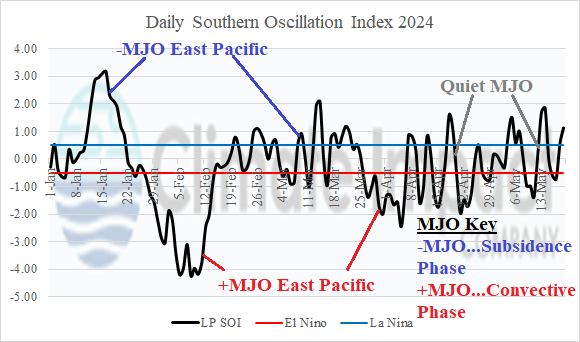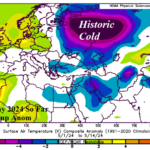
Explaining the Complex South America and Europe/Russia Weather Pattern During May 2024
05/17/2024, 5:57 am EDT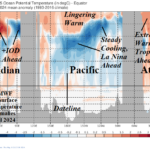
Equatorial Upper Ocean Heat Foreshadows Climate Pattern Changes Ahead!
05/21/2024, 4:48 am EDT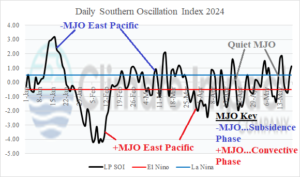
Fig. 1: Southern oscillation index helps to identify the influence of ENSO on climate patterns. Now that ENSO is neutral, the MJO is less active.
Discussion: The (Long Paddock) daily southern oscillation index (SOI) can tell us something about the atmospheric reaction to what’s going on within the ENSO System. El Nino ended recently, and neutral ENSO is in-place. We’re awaiting a transition to La Nina during the second half of the year although confidence in timing is LOW.
So far in 2024, the MJO presence and amplitude has governed the ENSO climate. Earlier this year, the subsidence phase of the MJO shifted east of the Dateline in the equatorial Pacific causing pressure to rise at Tahiti while comparatively, pressure lowered at Darwin. Consequently, a brief period of La Nina-like SOI was generated. Another convection phase of the MJO, the 6th of the past 12 months, caused a dip in the SOI to a strong El Nino-like signature in early February, the strongest -SOI of the 2023-24 El Nino. Since late March, MJO became dormant, a sign of neutral ENSO and the daily SOI has fluctuated within normal range. We await a steady shift to negative SOI to identify presence of a La Nina climate not likely until well into the summer or autumn.
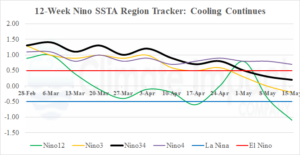
Fig. 2: The 12-week Nino SSTA monitor indicates neutral ENSO has arrived. Note that waters off the northwest coast of South America (N12) have cooled vigorously.

Fig. 3: The upper ocean heat across the equatorial Pacific has cooled and is supportive of La Nina development ahead.
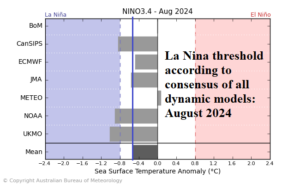
Fig. 4: The Australia Bureau of Meteorology collects leading dynamic models forecasting ENSO phase which indicate La Nina onset no earlier than August.

